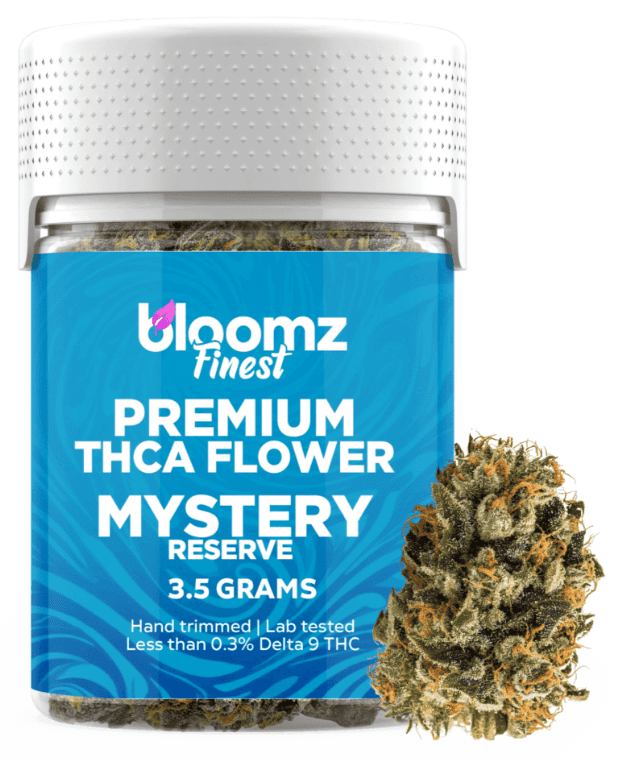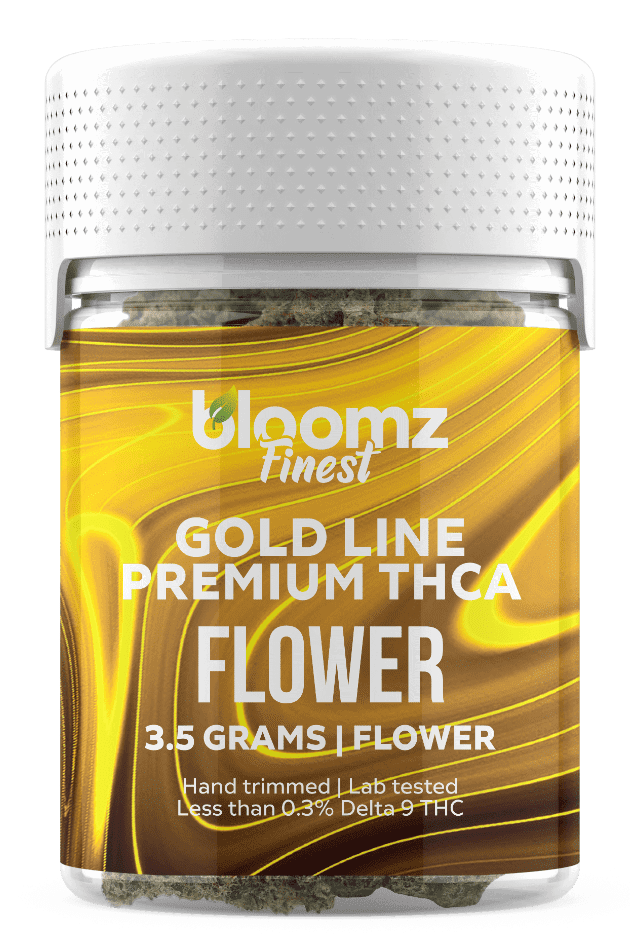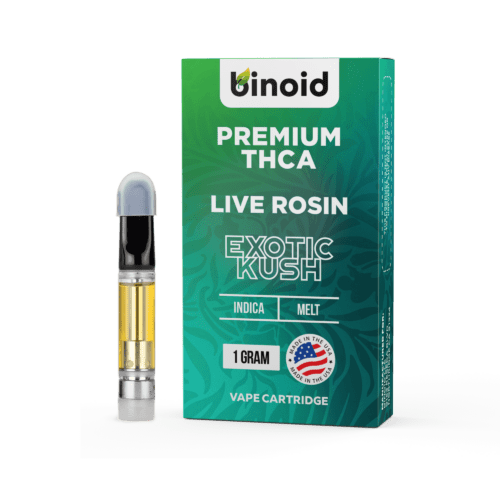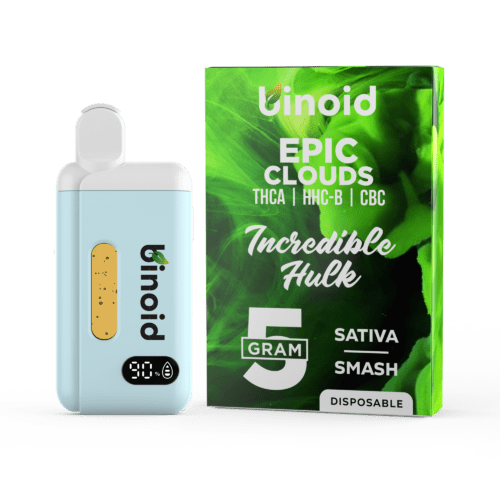The hemp plant’s flowering buds of are fascinating to observe, even among those who have no interest in consuming the plant’s chemical properties. We hemp enthusiasts find a lot of pleasure in noting the different qualities of different strains of the plant, with each terpene profile offering a completely distinctive flavor and aroma to captivate our senses. Another quality we take note of is the appearance of the buds, which can vary quite dramatically in size, shape, texture, and feel in terms of stickiness, etc.
Perhaps one of the most mesmerizing qualities of hemp flower, and yet the thing we take the most for granted, is the colors. If you line up the buds of a number of different strains all in a row, you may very well see a rainbow of hues, and many of us don’t realize just how much the various color shades of hemp flower can tell us about the quality of the flower, how it was grown and what we can expect from it.
To Buy THC Products Click Here
-
Product on sale
 Super 7 UFS Disposable Vape – 7 Gram$63.99
Super 7 UFS Disposable Vape – 7 Gram$63.99$89.99
Why Does Cannabis Turn Different Colors?
There are two direct reasons for cannabis to come in all sorts of unique colors.
Pigments
Pigments in the hemp plant are the main reason people can grow different colored cannabis. Keep in mind, colorful weed strains must contain the correct pigments for them to change color. Those frequent cannabis pigments include:
- Chlorophyll: Plants get their green color from chlorophyll – an essential part of photosynthesis. Organelles in plant cells called, “chloroplasts” use chlorophyll to put together photons from sunlight, transforming these photons into usable energy. Chlorophyll is most plentiful when a plant is in its growth stage before reaching the flowering stage.
- Flavonoids: Natural compounds that plants produce are responsible for creating different colors. There are 6,000+ identified types of flavonoids in existence, each in charge of supplying cannabis other colors, and that’s called, “anthocyanins”. You see, these pigments are responsible for causing blue, purple, and red colors in plants, particularly in fruits such as blueberries and blackberries. Flavonoids are also crucial for plant health.
- Carotenoids: Are responsible for red, orange, and yellow pigments in plants and animals. Similar to chlorophyll, carotenoids aid in plants absorbing solar energy. They can also guard against free radicals.
Environmental Factors/Conditions
The environment in which cannabis grows could have a tremendous part in what colors the plant displays. As summer goes on for instance, the plant utilizes less energy to create leaves and instead, more energy to produce flowers. So, other colors then begin to emerge. Environmental factors/conditions that affect cannabis color production would be:
- Temperature: Cannabis being grown at a certain temperature shall affect chlorophyll production. Lower temps mean less green due to the chloroplasts slowing down. The anthocyanins and carotenoids have a shot to shine in lower temps.
- Soil pH: Whether the soil is acidic, alkaline, or neutral will impact what colors a cannabis plant displays. Strictly manipulating soil pH when the plant is flowering could inhibit the plant’s growth. Also, be aware that cannabis prefers slightly acidic soil, hence, it will do its best when the pH level up around 7 minimum.
- Nutrients: Deficiencies in nutrients can also cause color changes in cannabis to occur, although causing a nutrient deficiency is also bad for the plant. Two nutrients plants rely on for hardiness and health are nitrogen and phosphorus.

The Colors of Cannabis
Cannabis flower is composed of a few different parts, all of which can have their own range of vibrant colors. Let’s break down the different colors of cannabis and what they represent, to help you better understand how to identify all kinds of valuable factors just from sight alone.
#1: The “Green”
The main part of the flower bud is undeniably green, but it’s surprising how much the actual shade of green can vary from one hemp plant to the next. Of course, it’s chlorophyll that’s responsible for the green, which gives all plants the same green color. Plant tissue produces so much chlorophyll that it masks any other colors present in the plant, at least during most stages of the plant’s life cycle. Based on the plant’s genetics, the green can be mint, sage, olive, forest or just about any other shade of green that occurs in nature.
The green of the plant also comes directly from its light cycle. Chloropyll production in any plant is dependent on sunlight, and as the plant matures, cultivators aim to lengthen the darkness to which it’s exposed to, to replicate the natural cycle of reduced sunlight as the plants go into the autumn season. The result is less chlorophyll production, and less green, which allows other hues to begin to come out. What this means is that the green tells you a lot about where the plant was in its life cycle when the buds were picked.
#2: Hue Undertones
The two main hues that can serve as the undertones of the plant are gold and purple, both of which tend to blend with the green in stunning ways. Gold, which sometimes can have a more amber-like shade, comes from a class of pigments again called, “carotenoids” that exist throughout plant life, and can only really come through once chlorophyll production has slowed down, thus no longer allowing green to dominate. So, the gold to amber hue does not represent the effects of the hemp buds, but rather the stage of the plant.
The purple undertone is a favorite, and many people believe that a purple bud yields stronger effects. This, actually, has yet to be proven. Purple comes from pigments known as anthocyanins, which are produced by using excess sugar in the leaves, which then spreads throughout the remainder of the flower. The production is triggered by exposure to cold, combined with longer dark periods, and some strains are more apt to produce high levels of anthocyanins than others based on their genetics – think Grandaddy Purple, for instance.
#3: Pistils
Then, we have the pistils of the buds, which are the little hairs that poke out, and usually range from golden-yellow to dark and rich amber. Pistils are part of the reproductive system of the plant, and their color again tells you a lot about where the plant is in terms of maturity.
During the earliest flowering stage of the plant, these pistils are a white color. The reason you’ve never seen buds with white pistils is because the earliest flowering stage is not the ideal time for harvesting, since the cannabinoids and terpenes are not fully developed yet. During the mid-flowering stage, which is still quite early, the pistils turn red, orange and pink. The late flowering stage is when the pistils become very vibrant, sometimes rich amber, neon orange or vividly gold. Also, exposure to a longer dark cycle forces the pistils to turn darker faster.
Many experienced cultivators use the color of the pistils to determine when it’s time to pick the flower off of the plant. They offer basically a foolproof way to identify how mature the buds are.
#4: Trichomes
These are the resinous glands that coat the plant and sometimes give it a sticky appearance. Trichomes are of utmost importance, as they contain strong concentrations of the most sought-after compounds in the flower – cannabinoids and terpenes. Aside from the stickiness, which tells us the trichome count, many people pay close attention to their color as well, which can range from a faintly white, sugar-glazed appearance to a rich white, and even lavender, gold, etc.
Trichome color again indicates where in the lifecycle the plant is. In the earliest stages, the trichomes are almost clear. Then, they become a milky white color which may have some lavender or yellow hues based on the plant’s genetics. Finally, they become amber. As is the same for pistils, harvesters typically look at the color of the trichomes to indicate when it’s time to harvest the hemp buds.

How the Color Can Determine the Terpenes
Like we mentioned, the colors can tell us a lot about the terpenes in the strain based on their genetics. If you look up the visual descriptions of different strains, you’ll see that each cultivar has a unique color profile that applies to the color of its buds, its pistils and its terpenes. We used Grandaddy Purple as an example, as the distinctive purple shade indicates its genetic makeup. Cali Gold is another classic example, with an unmistakable gold hue. Silver Haze gets a silvery appearance thanks to its combination of a muted green bud covered in pale pistils and trichomes that make come together to dramatically alter the overall hue at first glance.
This also tells you something about where the plant was grown. For instance, cannabis traditionally grown in areas that generally have colder climates are more likely to yield a purple shade, since we now know that purple is a color that often indicates cold exposure.
How the Color Can Determine the Freshness
Finally, the color can indicate freshness of the hemp flower, to an extent. The less fresh the flower, the more the color of the buds starts to fade, losing its vibrancy. Of course, this is important as a flower that’s less fresh is also weaker in its effects. However, this is not the best indicator on its own, since we’ve demonstrated that some strains are naturally muted in color for genetic reasons.
Does Cannabis Color Affect Potency?
Overall, the hue of cannabis doesn’t affect its potency, but those trichomes are a deviation from this rule. For instance, white weed strains create really strong highs, according to some reports. Also, note that plants which’ve turned different colors, mainly because of inadequate nutrients instead of pigments, might not be as powerful.
Colorful cannabis provides an eye pleasing escapade the next time you partake in it. A combo of genetics and environmental factors as we touched upon earlier here, supplies cannabis a rainbow of hues. Again, while the colors don’t affect potency, nonetheless, colored cannabis is well-received for its interesting and attractive looks.
Take a Close Look at Your Buds to Learn More About Them
The rainbow of colors we can see in the cannabis world tells us a whole lot about them, including when they were picked, where they were grown and how fresh/potent they may be. So, the next time you’re selecting hemp flower at Binoid, don’t just pay attention to their aroma, but what they look like, including the pistils and trichomes, and you might be surprised by how much you can learn.
To Buy THC Products Click Here
-
Product on sale
 THCA Diamonds 2500mg – Bundle$102.99
THCA Diamonds 2500mg – Bundle$102.99$169.99



